Montemurro influence, style & approach
Exciting times are evident in the FAWSL, average attendances have more than tripled for the 2019/20 season compared to 2018/19 and three teams are currently in a 3-way battle for the title. Arsenal are one of these three title challengers, currently lying in third place with 36 points from 15 games, 4 points behind leaders Manchester City and 3 points behind second-placed Chelsea.
Arsenal are the FAWSL reigning champions having lifted the trophy during the 2018/19 season with 54 points from the 20 games, ending 7 points ahead of runners-up Manchester City and 12 ahead of Chelsea. Arsenal’s principles of play under Australian born head coach, Joe Montemurro, are very consistent and include looking to dominate possession of the ball. Statistically, this is demonstrated during the last four league games with total possession statistics of 63.9% (vs. Liverpool), 66.9% (vs. Manchester City), 56.9% (vs. Chelsea) and 71.1% (vs. Brighton and Hove Albion).
In comparison to their opposition, Arsenal attempt and complete substantially more total passes. Here are the statistics: 603 passes made at 78.8% accuracy vs. Liverpool who made 333 at 68.2% accuracy. 633 passes made at 82.3 accuracy vs. Manchester City who made 424 passes at 78.3% accuracy. 526 passes made at 77.0% accuracy vs. Chelsea who made 420 passes at 70.2% accuracy. 740 passes made at 86.9% completion vs. Brighton & Hove Albion who attempted 382 passes and completed only 71.5%. (source: wslstats.org).
Arsenal, therefore, provide a good opportunity for tactical analysis during the build up phase in possession. This scout report and analysis piece will focus on the system, tactics and individual player roles/responsibilities of Arsenal when in possession and attacking from the defensive and middle thirds.
Arsenal: flexibility in system, consistent in principles of play
Arsenal traditionally implement a 1-4-3-3 initial system which is fluid in structure allowing for one single or, depending on the opposition and game situation, two double central midfield pivots to support in thebuild-outt phase. However, head coach Joe Montemurro is also very flexible in using alternate systems and the responsibilities for each player. Although alternating systems, Arsenal do not compromise on their principles of play (tactics) and remain very consistent.
For example, against Chelsea, Arsenal began in a 1-4-4-2 system with Jill Roord pushing higher up the field to combine with Vivianne Miedema when attacking and to be able to press with a front two. In this game, the traditional #10, Kim Little, was responsible for the left half-space in the middle third, with width provided by the left defender Katie McCabe. On the right, Danielle van de Donk occupied a wider role within the midfield four.
When facing Brighton, Arsenal implemented an alternate 1-3-3-3-1 approach and finally, vs. Manchester City a more ‘traditional’ 1-4-3-3 (1-4-2-3-1) approach was taken with high wide defenders, fluid midfield three and wide forwards positioned in the interior channels. The diagram below shows the average positions of Arsenal vs Brighton and Arsenal vs Manchester City, providing context to the variations and flexibility in system implementation. Leah Williamson has been a specific player that has provided consistency within these alternating systems with a team high of 15 matches played with 15 starts.
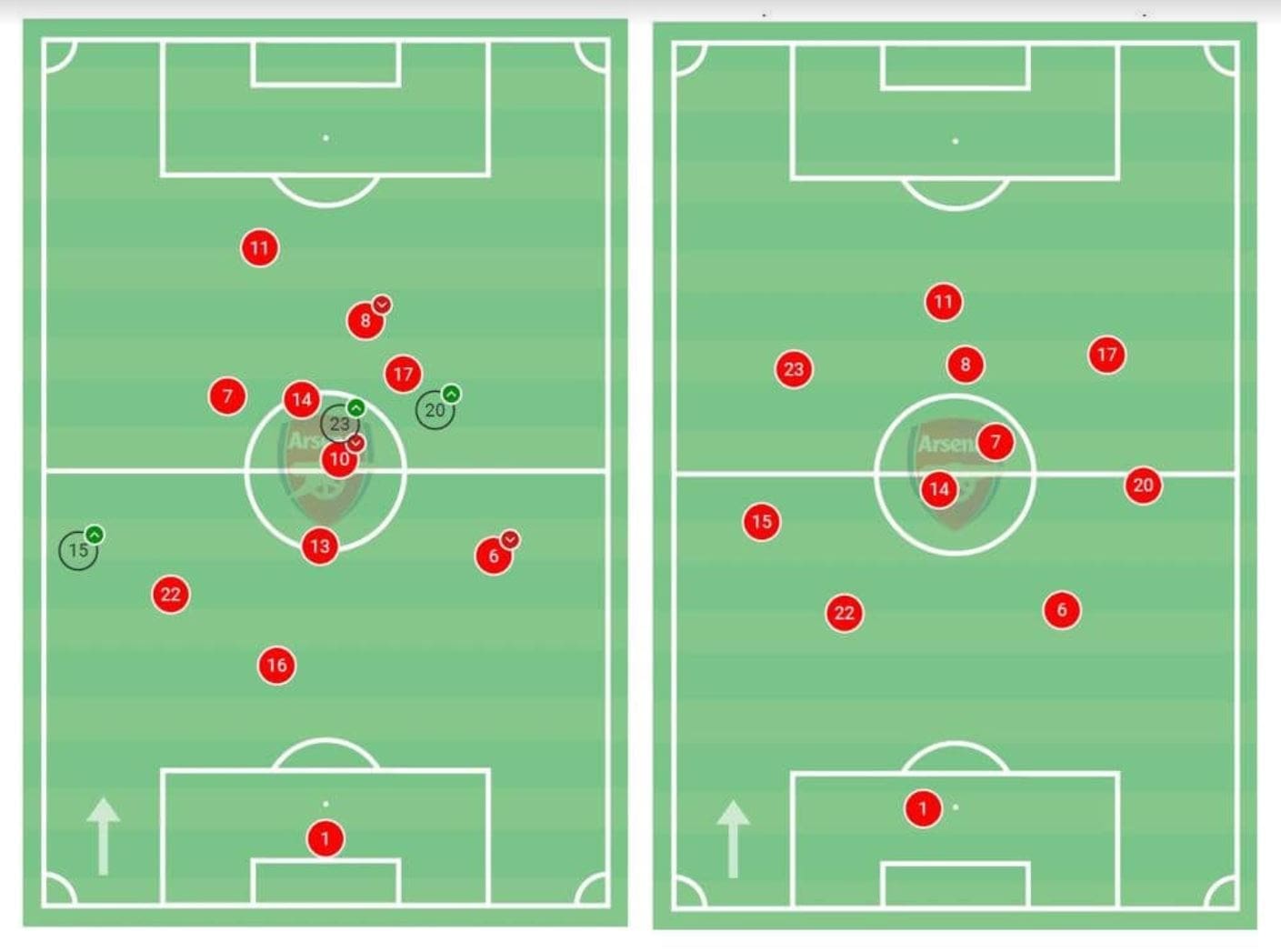
What is the build-out phase?
It is important to start with a clear definition of the ‘build-out phase’ which will provide a starting reference for analysis of the tactics employed by Arsenal. For the purpose of this article the ‘build-out phase’ will be referred to as any period where Arsenal are in possession of the ball in their defensive half of the field and are attempting to eliminate/progress the ball past the first (oppositions attackers) or second (oppositions midfield) lines of pressure. The opposition can be either a) organized (defending phase) or b) disorganized (during negative transition phase).
Generating the first passing option
The initial stage of the buildup play can include the goalkeeper passing from a goal kick, the goalkeeper passing after making a save, or with an outfielder in possession after the team has won possession of the ball (attacking transition). Arsenal during this initial stage require a passing option to a player in possession that can ‘ideally’ face forward, a ‘free’ player. For this to occur, Arsenal look to create numerical superiority. This is when Arsenal have one additional player in that zone of the field compared to their opponents. This is straightforward when attacking vs one central forward. Arsenal split their central defenders wide and a 3v1 is created, as evident in the diagrams below.
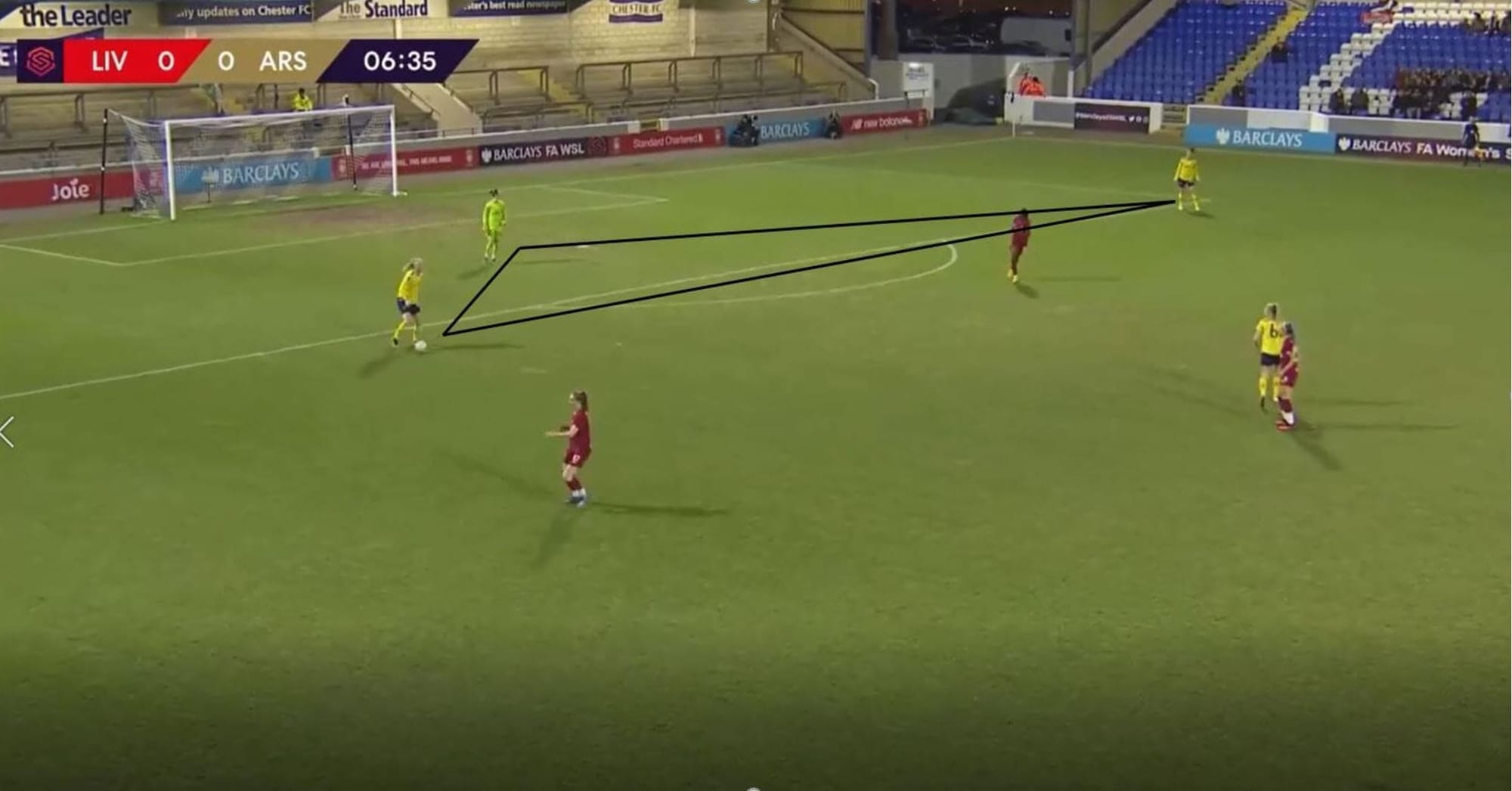
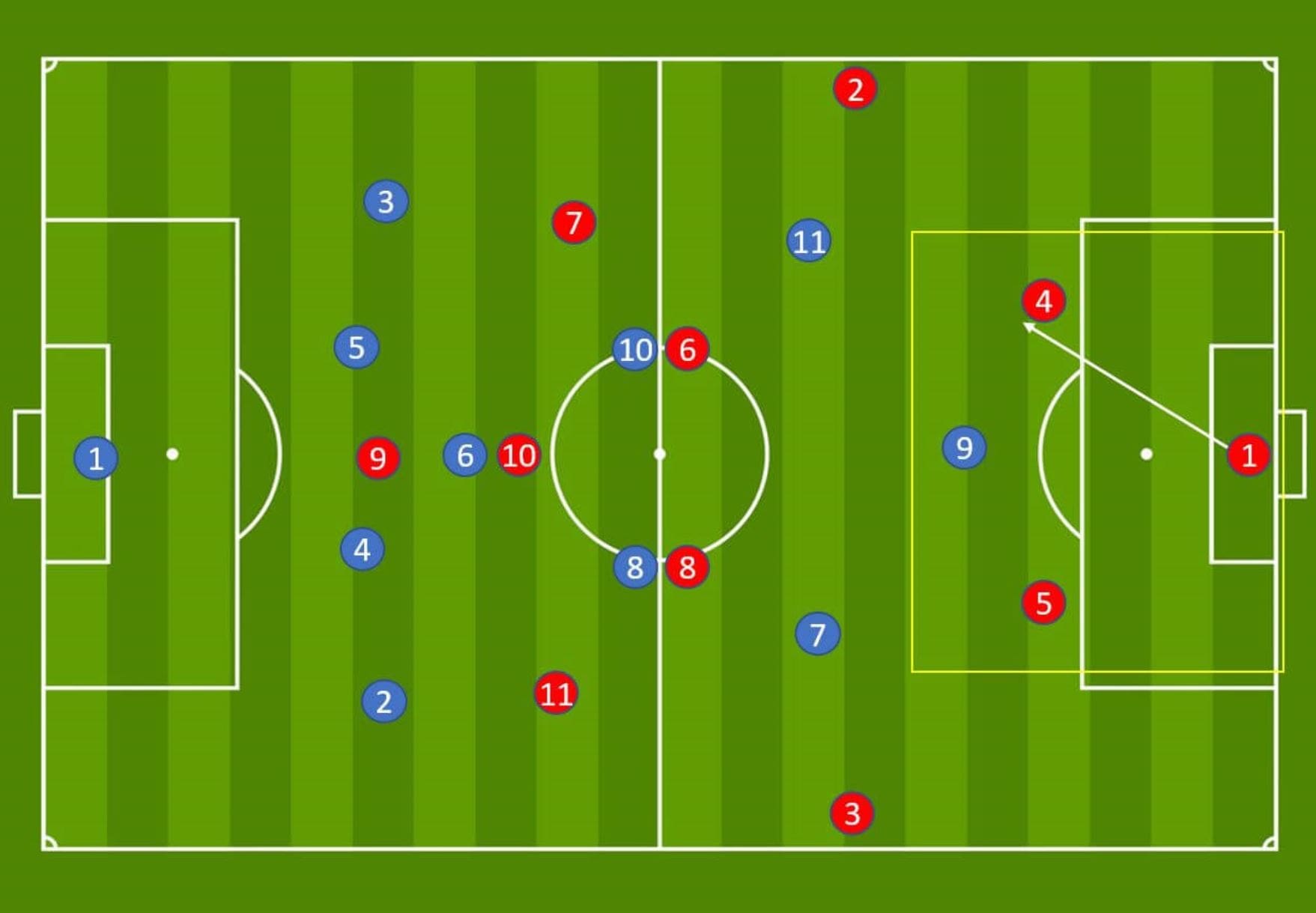
When playing against two central forwards (1-4-4-2 pressing system), this can create an initial problem as a 2v2 situation and numerical parity is initially evident on the first line. An opposition can create two pressing forwards in two different ways. Achieved by utilizing one centre forward and a pressing central midfielder (generally this is within a 1-4-3-3 system) or two pressing natural central forwards (1-4-4-2 pressing system).
In order to combat this numerical parity, Arsenal carry out several potential strategies. One option Arsenal have implemented vs the pressing front two is to position one central defender into the central channel, with the aim of ‘fixing’ one of the oppositions central forward, flattening one wide defender and essentially looking to build out with an initial defensive line of three in an asymmetrical build-up shape. This has the added benefit vs a 1-4-4-2 system of potentially drawing of the oppositions wide midfielder from a compact midfield shape in order to eliminate the first line of pressure and progress through the second. A second option, as demonstrated vs Brighton and in the diagram below, is to implement and attack in a back three system. Both options create a 3v2 situation against the first line of pressure.
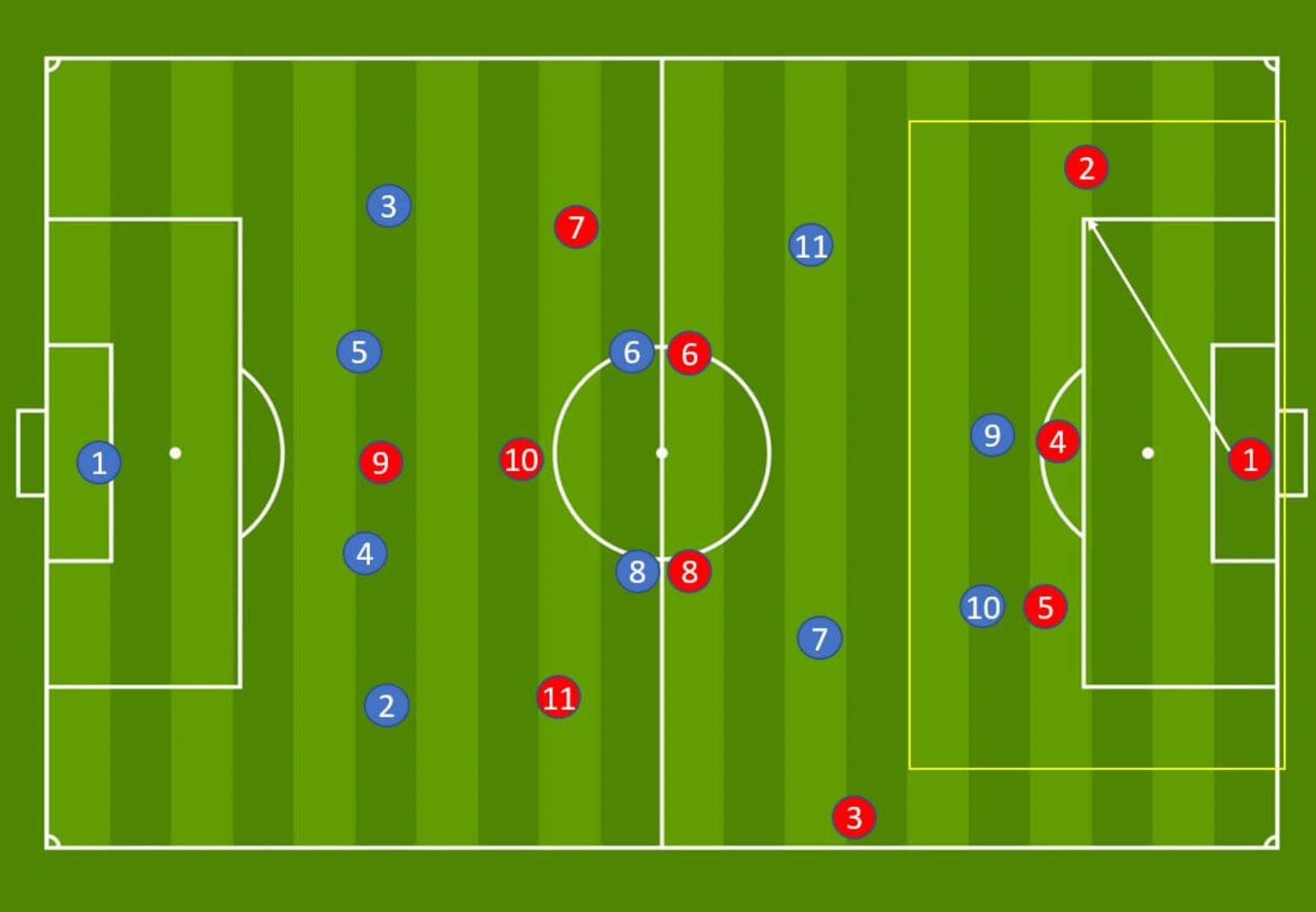
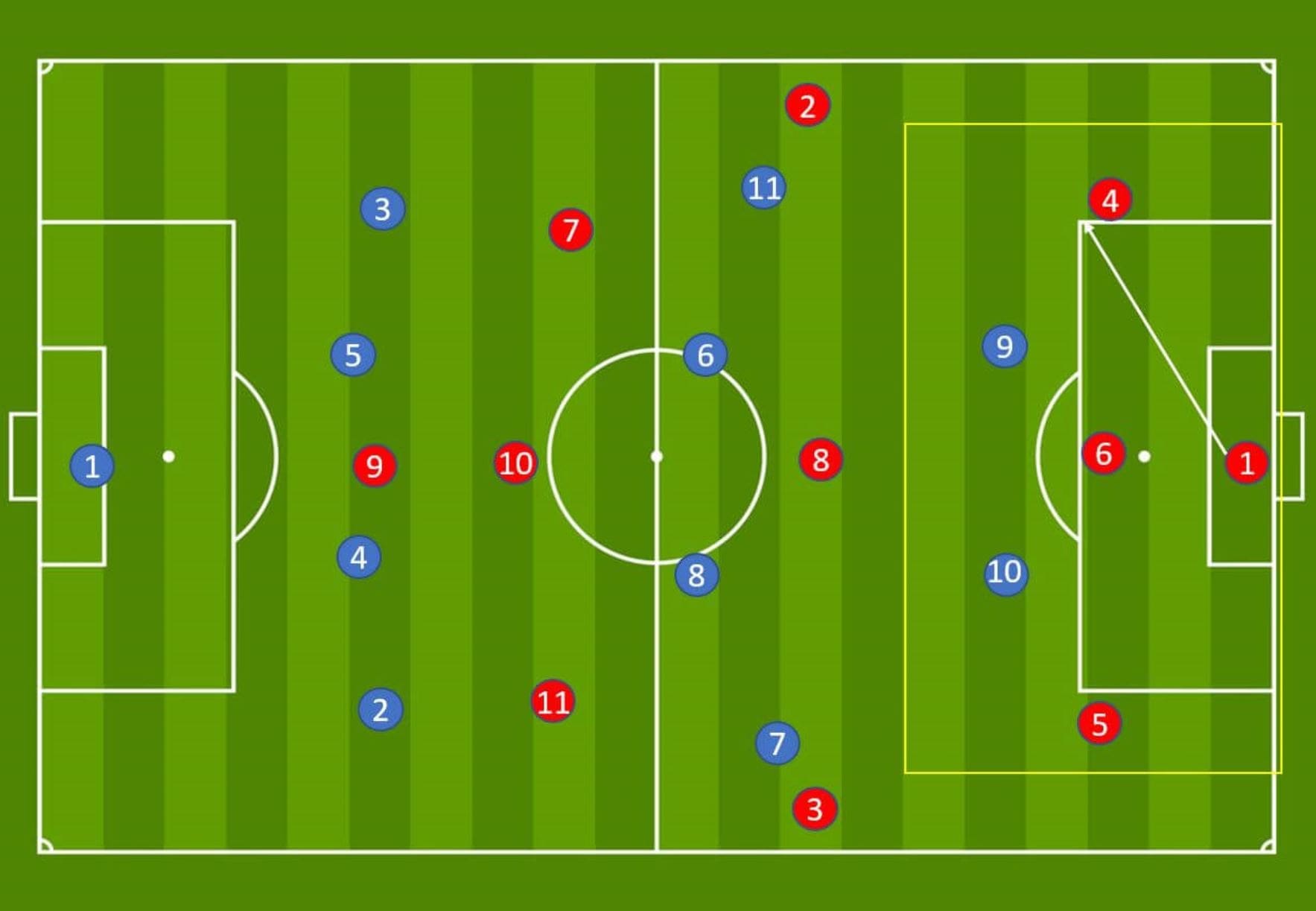
Ball progression
Now that Arsenal have a player in possession of the ball facing forward, the next aim is to progress the ball and eliminate opposition lines of pressure. This is achieved through both positional rotations and positional superiority.
Arsenal use their central forward effectively during the build-out phase when the opponent is marking player to player tightly through the midfield. Arsenal draw out the midfield marking players, open the passing line into the checking forward and create an overload in midfield. This not only provides a supporting passing option but can also eliminate both the first and second lines of pressure.
In the below diagram, Arsenal are attacking in a 1-4-3-3 shape matched up against Liverpool who are defending in a 1-4-3-3 shape with tight marking in midfield. Jordan Nobbs, Danielle van de Donk and Leah Williamson are tightly marked in midfield but have opened the passing line into the checking central forward, Vivianne Miedema. This has created a passing option for the central defender Louise Quinn and drawn Liverpool’s central defender out of compact shape.
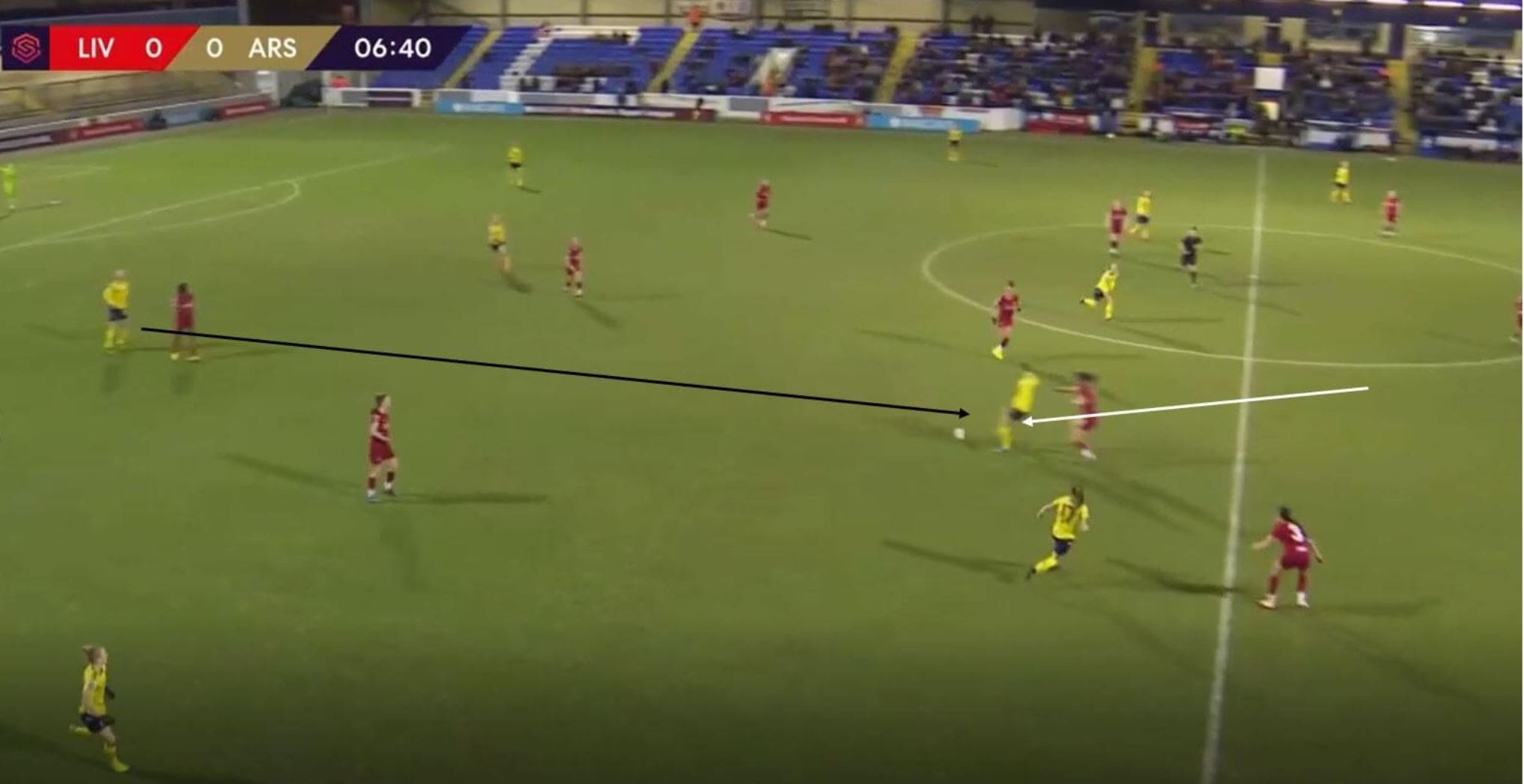
Another similar tactical positional rotation that Arsenal implement is movement from the wide forwards checking deeper and into midfield. This option is executed when the opposition wide forwards are defending outside and have left a passing lane open more vertical and into the interior channels. The diagram below shows Arsenals left central defender in possession passing into the left forward with 3v3 in central midfield (tightly marked) and the oppositions wide forward allowing the vertical pass.
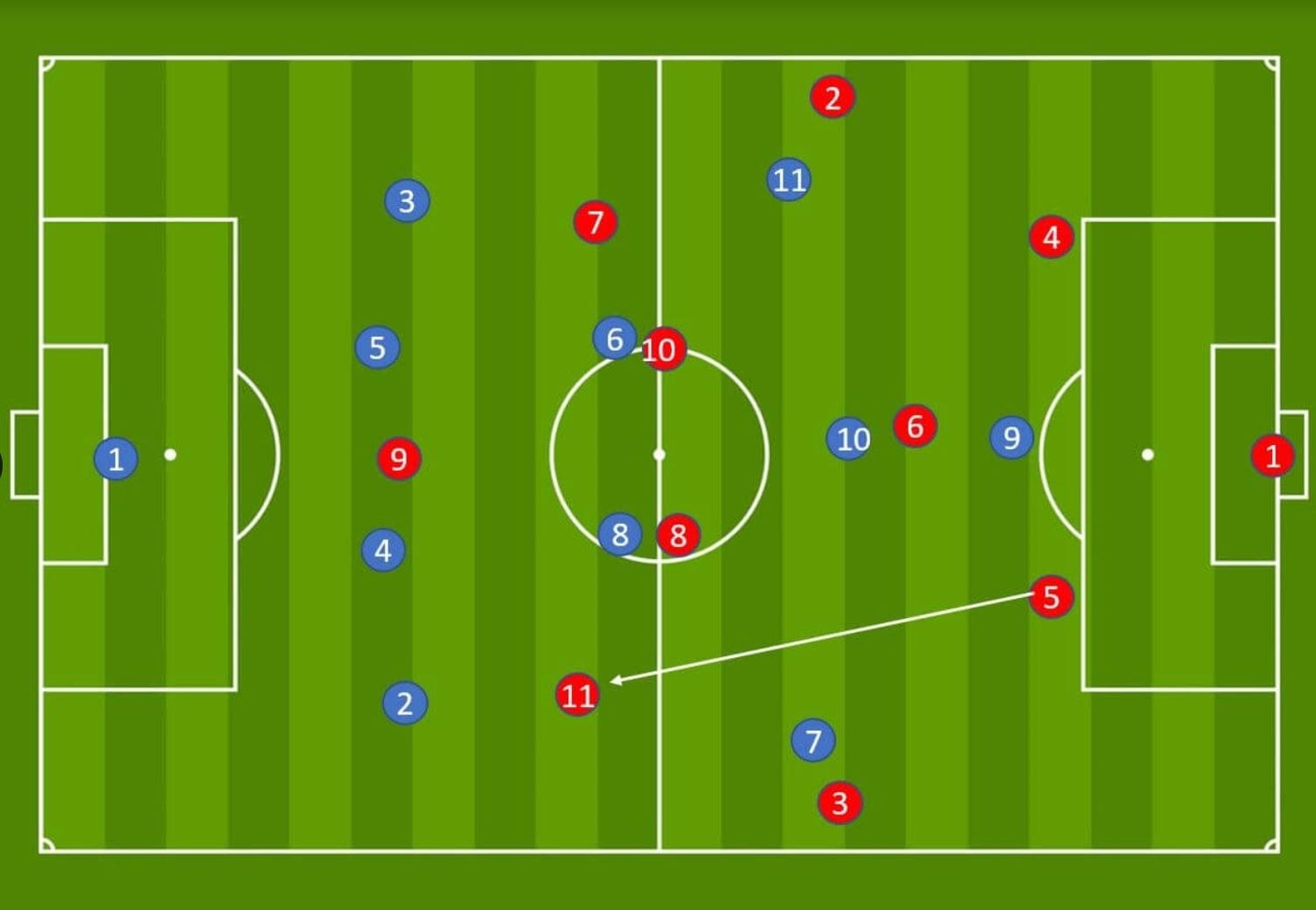
Also observed is the rotation of one of the central midfielders into the wide channel. This occurs after the wide defender has emptied the space of any opposition defenders by moving higher up the field. When the central midfielder rotates into the now free outside channel, Arsenal have two options and the decision chosen will be based on the oppositions pressing strategy. If the opponent follows the central midfielder into the outside channel, this opens space centrally for another Arsenal midfielder to receive. If they do not follow, Arsenal can easily find this free rotating player who can face forward and move the ball into the next line of pressure.
Positional superiority refers to being ‘better’ positioned than the opponent in order to progress the ball. The principles of play implemented from Arsenal in order to generate positional superiority include width, depth, height, support and spacing behind the opponent. One of the examples of positional superiority is provided by the width of the full-backs. When facing an opposition wide player that is positioned infield in order to deny a more vertical pass, Arsenal will position their wide defenders very high and wide in order to be able to receive a diagonal pass behind their direct opponent.
In the diagram, Arsenals wide defender Leonie Maier has received a pass from Louise Quinn behind the left forward of Liverpool due to her positional play and can progress the ball past the first line of pressure. The second diagram is an example vs Brighton in which Leah Williamson has been able to receive the ball wide and high and thus eliminate the first line of Brighton’s pressing.
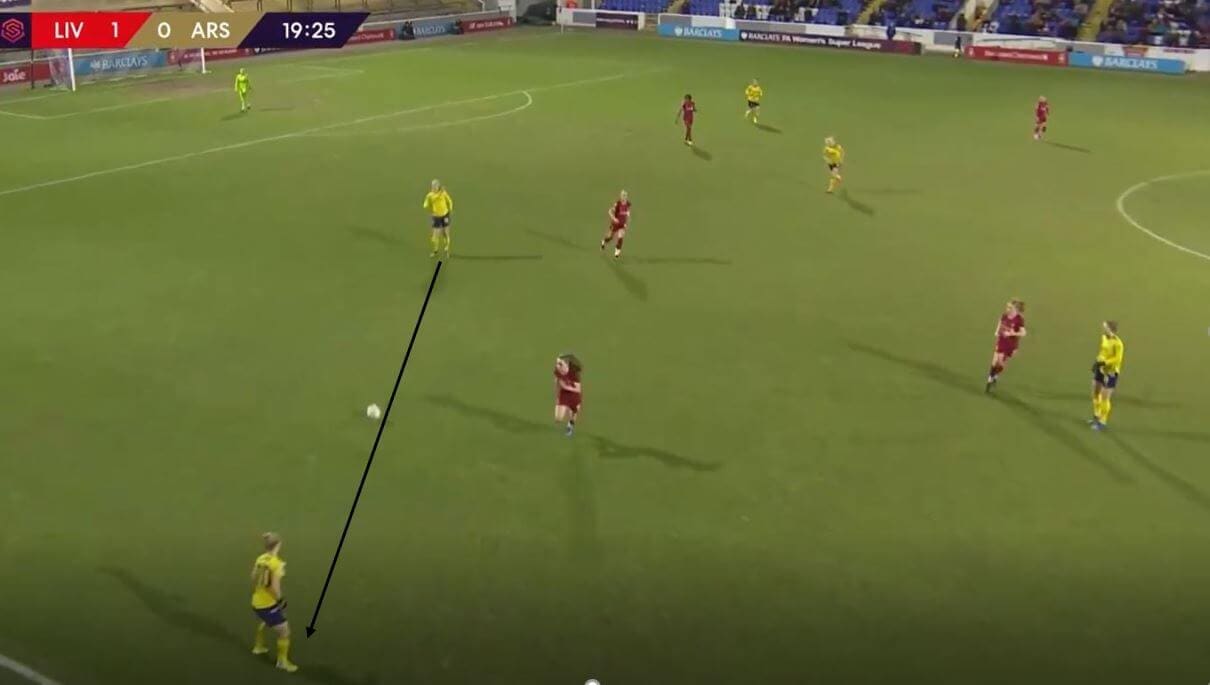
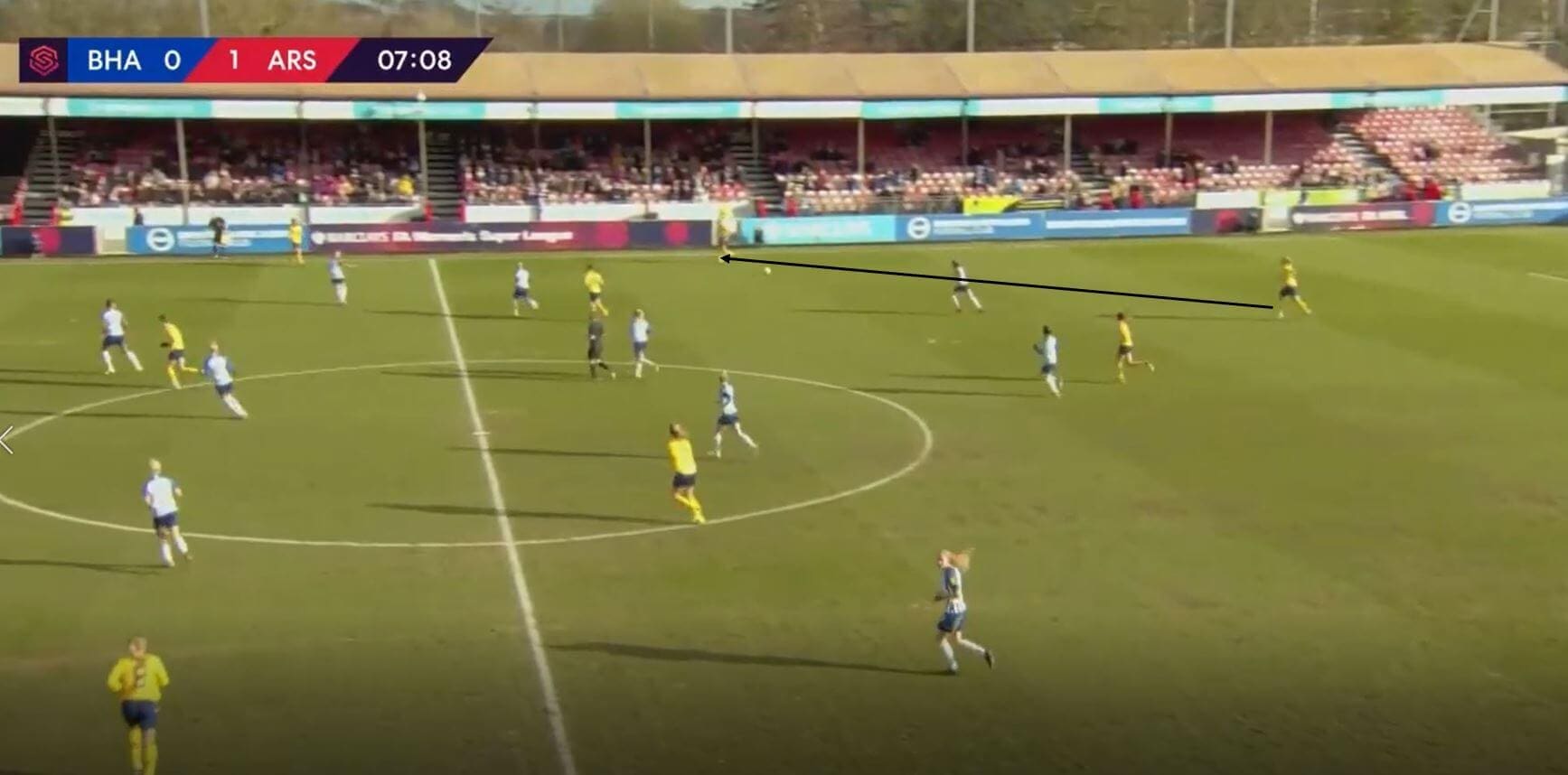
Another example of positional superiority is the positional play of the defensive midfielder when Arsenal are attacking vs two pressing forwards. The defensive midfielder will position themselves behind the two pressing two forwards and with the goalkeeper to create a 4v2 diamond shape. If the central defenders have space and time to face forward, the pivot player has the potential to receive the ball unopposed. The problem is the pressing forwards pressing shadow could eliminate this passing option. Arsenals defensive midfielder must, therefore, recognize the pressing shadow and move underneath or ahead depending on the angle of the press.
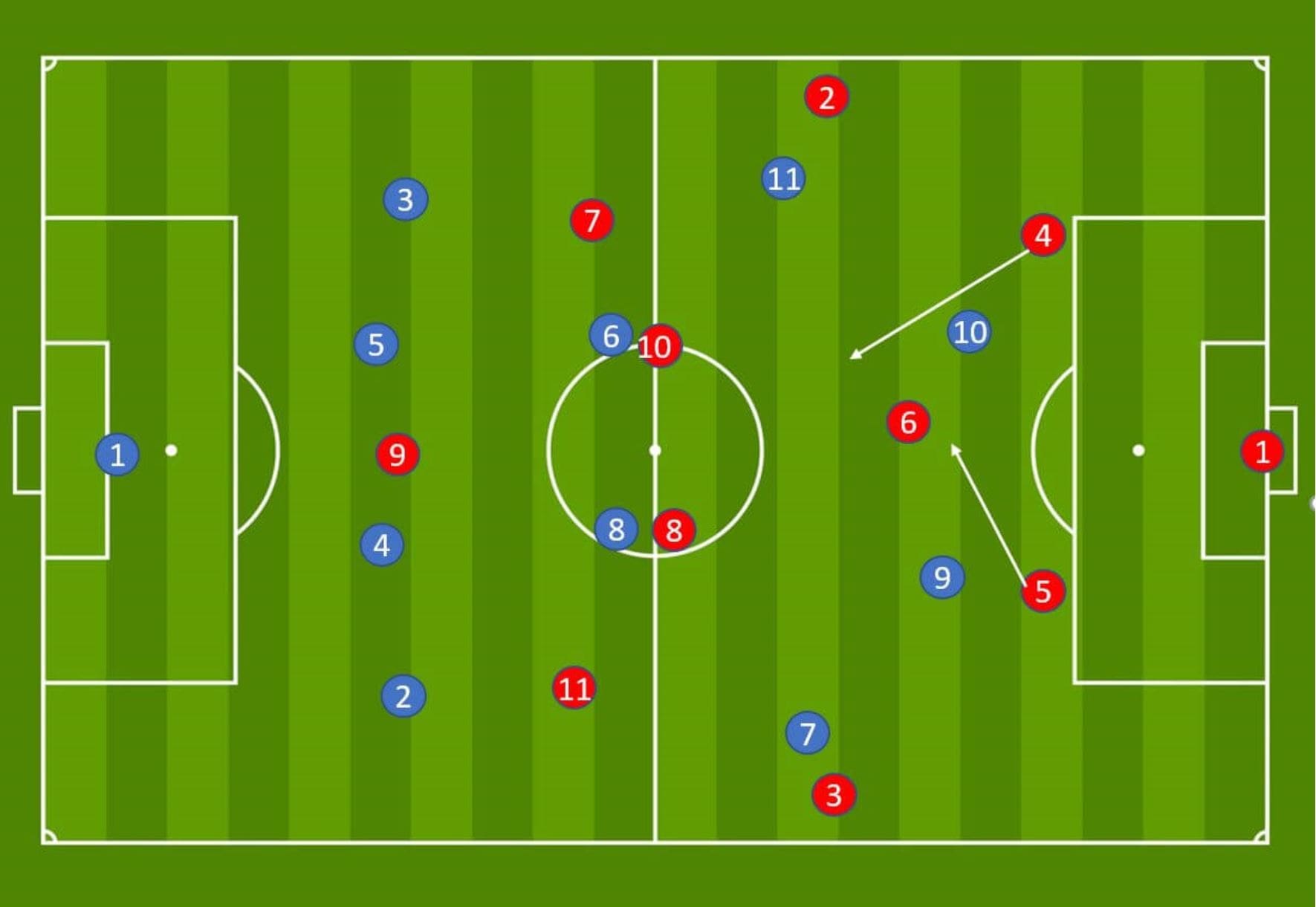
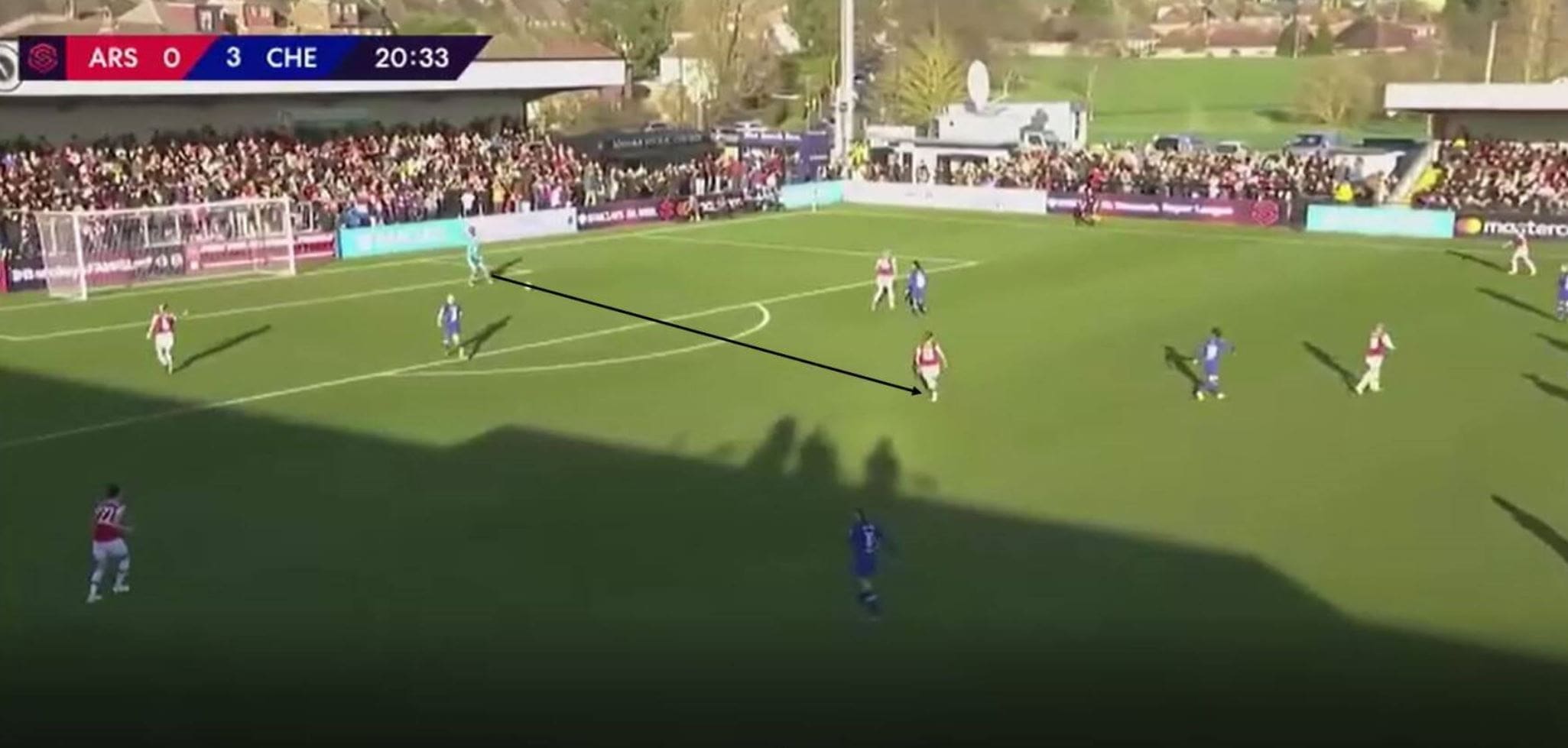
The third example of positional superiority is provided by the role of the attacking central midfielders. These players attempt to receive the ball in between the oppositions defensive and midfield line. This is a ‘blind spot’ for the opposition’s midfielders. In the diagram, Jill Roord is positioned to receive a pass from Lia Walti with space to be able to turn, face forward and attacking into the attacking half of the field.
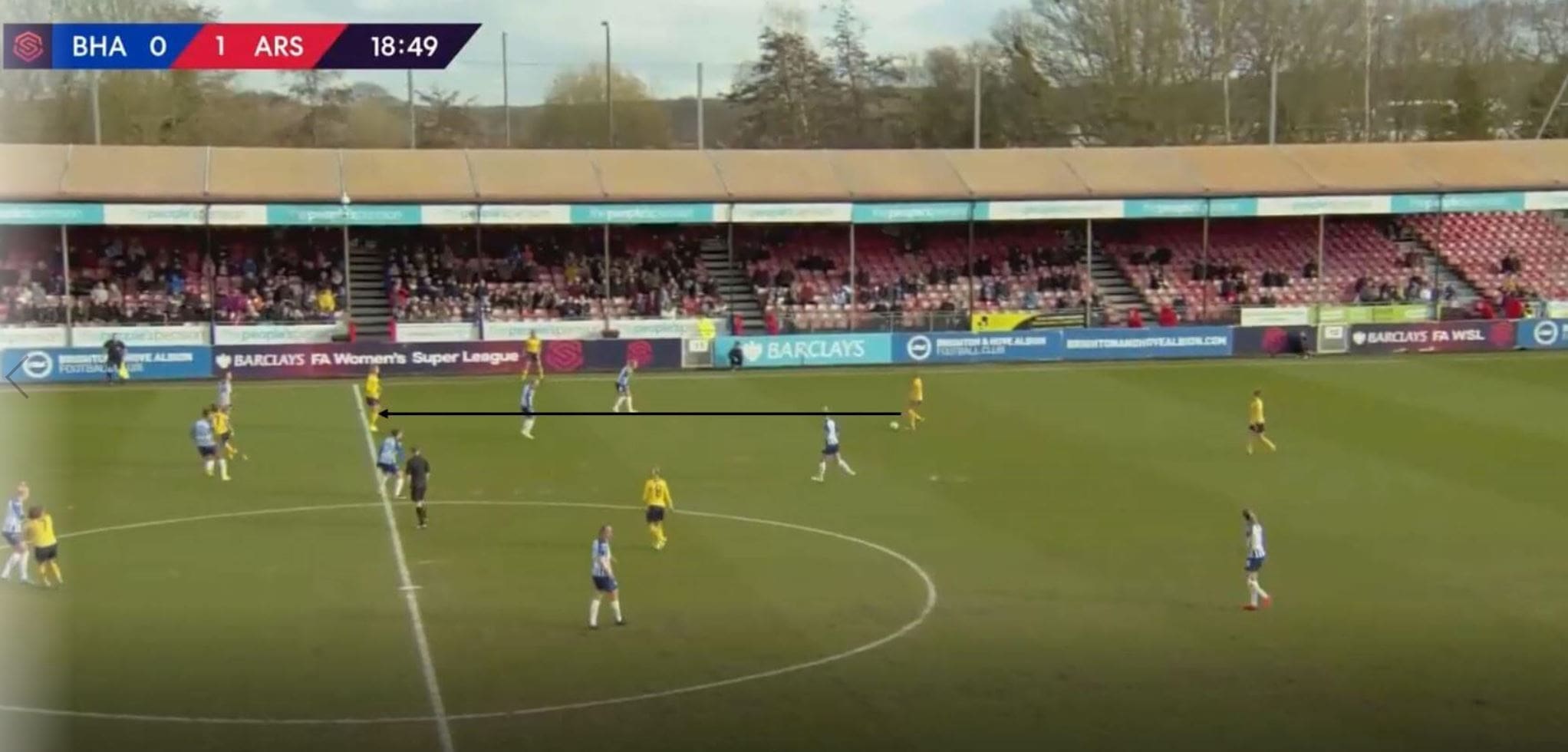
Struggles versus a 1-4-4-2 pressing diamond midfield
Chelsea proved a very difficult opponent for Arsenal to build out against and initiate their attacking play. In their last FAWSL meeting on Jan 19th, 2020, Chelsea ran out 4-1 winners, racing 3-0 ahead inside the first 20 minutes.
In order to provide Arsenal problems during the build-out phase, Chelsea utilized two athletic central forwards in Sam Kerr & Bethany England to apply high pressure to Arsenals two central defenders, Louise Quinn and Leah Williamson. This limited Arsenals ability to create numerical superiority, a passing option for the goalkeeper and to progress easily within the first line of pressure.
Key to Chelsea’s pressing strategy and difficulty for Arsenal to break down was the diamond midfield, using Ji So-yun onto the single pivot, Lia Walti. The wide defenders, Katie McCabe and Victoria Schnaderbeck were covered by Chelsea wide midfielders, Guro Reitan and Erin Cuthbert.
Although Arsenal had numerical superiority in their own half of the field, the speed and intensity of Chelsea’s pressing, the limiting of the closest passing options and compactness by moving the weak side midfielder infield created numerous turnovers and lead to Chelsea developing a lead that they could hold for the rest of the game. The 1-4-4-2 diamond matches up well against Arsenal if the players within this system are quick enough to rotate into defensive shape and shift marks. The diagram shows the closing down of the closest passing options of Chelsea when facing Arsenal
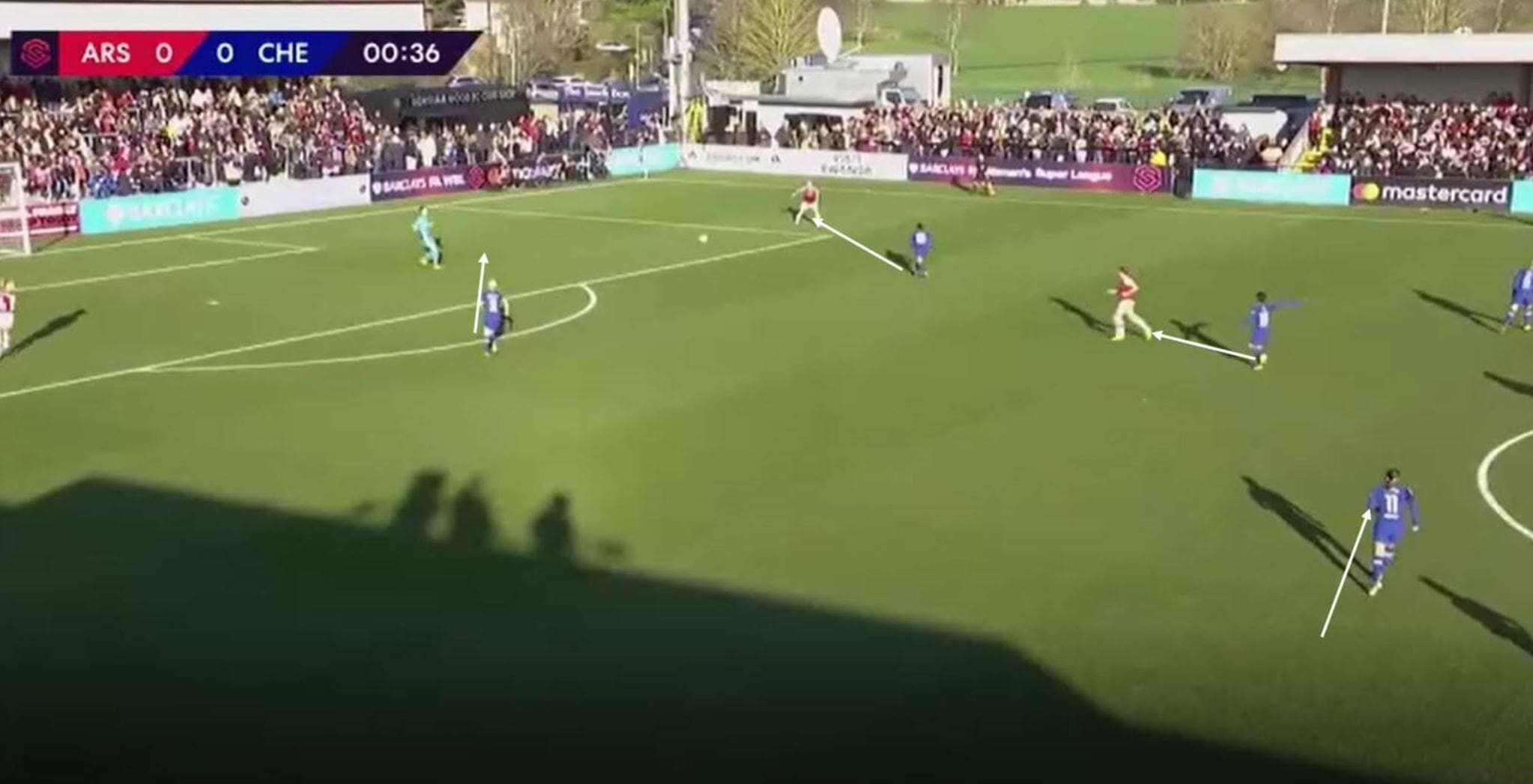
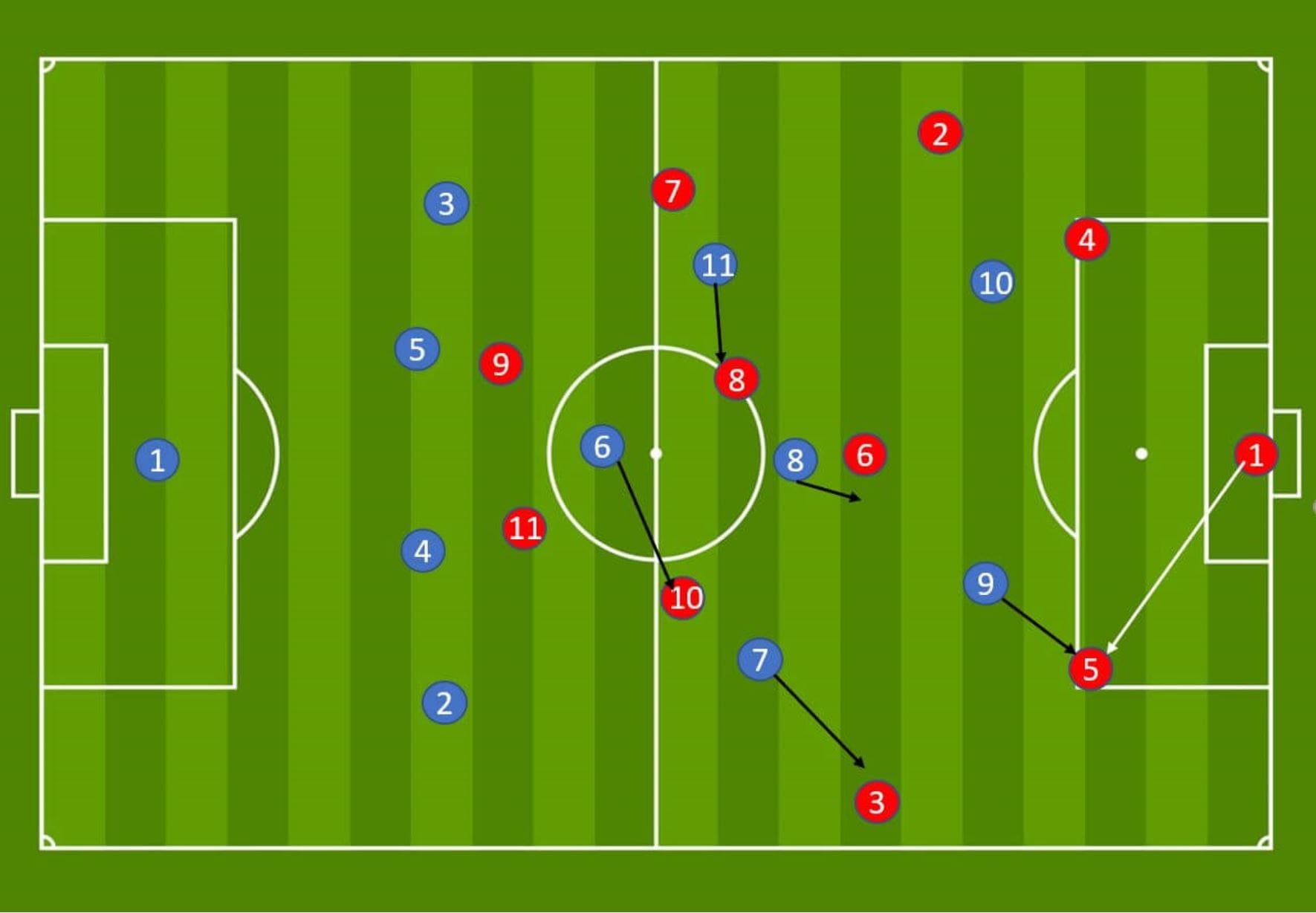
Conclusion
In conclusion, this tactical analysis has identified the system, roles and responsibilities and provided a description of the principles of play of Arsenal and head coach Joe Montemurro during the build-out phase. Arsenal build-out by attempting to create numerical and positional superiorities through spacing and positional rotations. Arsenal have also implemented numerous systems whilst maintaining their principles of play (tactics). Chelsea and the 1-4-4-2 diamond pressing system has been identified as the most effective pressing strategy and system in order to disrupt the positive play of Arsenal during the build-out phase.

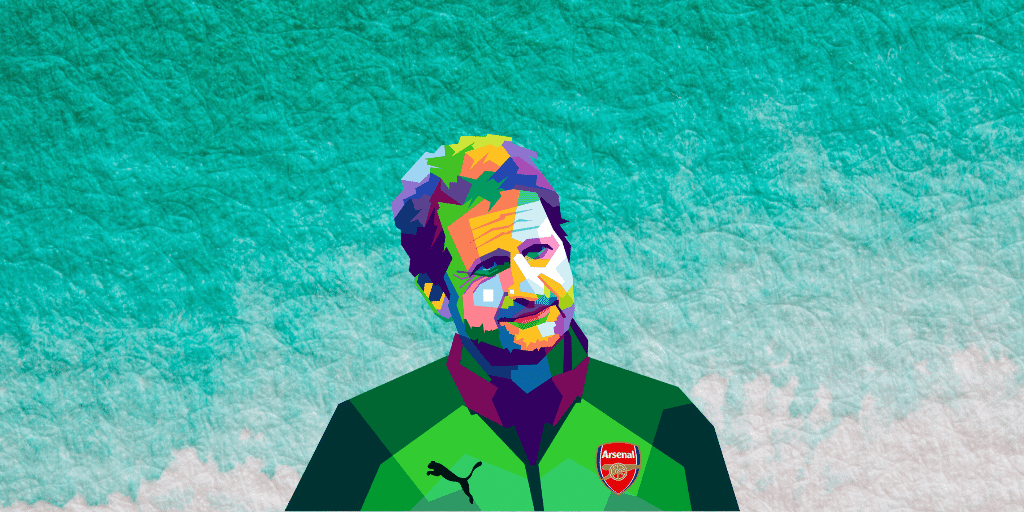



Comments